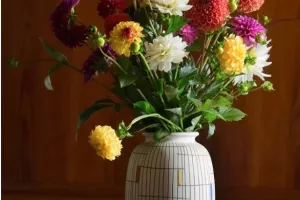Carnations are native to the Mediterranean region and are widely cultivated in Japan, South Korea, Malaysia, and other countries in Asia. They are also cultivated on a large scale in Germany, Hungary, Italy, Poland, Spain, Turkey, Britain, and the Netherlands in Europe. They are one of the most widely used flowers in the world.
Carnations, including many varieties and hybrids, can bloom almost continuously in the greenhouse. The flowers are rich in variety of shapes and colors. They are usually fragrant and has a long flowering time. They are very suitable for bouquets and gardens. They are valued for their beauty, charm, lilac-like aroma, and lasting freshness.
The history of carnations can be traced back to ancient Greece and Rome when they were used for art and decoration. These early carnations mainly appeared in the photocopies of light pink and peach, but over the years, the available colors gradually developed to include red, yellow, white, purple, and even green. The popularity of carnations has not declined over the centuries. The fact that carnations continue to exist proves their great attraction.
The origin of carnation flower is undoubtedly the offspring of the wilderness in southern Europe. Pliny said that carnations originated in Spain 2000 years ago and were discovered in Spain during the time of Augustus Caesar. According to legend, carnations were introduced into England by Normans; The moors had already cultivated double petal carnations in the 13th century.
Carnations are the official flowers of "Mother’s Day" in many cultures around the world, which are traditionally related to this occasion. The tradition of Mother’s Day began with Anna Mary Jarvis (1864-1948), who was the founder of Mother’s Day in the United States. She pioneered the use of carnations in memory of her dead mother. After Anna's mother died, Anna organized a memorial service and sent 500 carnations to all participating mothers. Since 1907, pink carnations have been used as a symbol of mother's day, so they are now often used as flowers for mothers.


